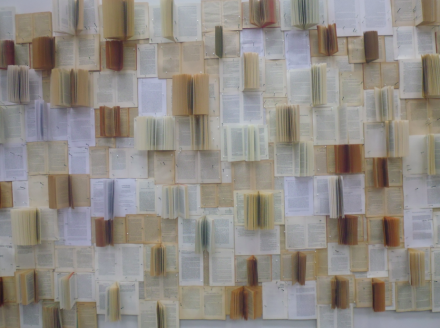
The installation (shown above) consists of open books, in different languages, nailed to a wall. For the architect-artist Ola-Dele Kuku, the words displayed are a reminder that gaps and contradictions in our knowledge as designers can lead not just to imperfect work — they can make things worse.
Ola-Dele Kuku’s piece features in a design triennial in Belgium on the theme of Conflict and Design. The event is a powerful reminder about the limits to understanding that necessarily inform any proposed intervention in someone else’s culture. However much one ‘reads up’ on a situation, one’s understanding will unavoidably be partial.
Humanitarian crises caused by resource grabs, or natural disasters, often trigger a wave of support from the public – and a determination, among designers, to do something practical. But, as Teju Cole has so trenchantly reminded us: “If we are going to interfere in the lives of others, a little due diligence is a minimum requirement.”
Any of us wishing to do good, Cole continued, must ”think constellationally, connect the dots, and see the patterns of power behind isolated disasters”.
The most encouraging feature of Conflict and Design is that it does not connect up dots on our behalf; the show contains far more questions than answers, and few of its impressive range of projects offer pat, pre-packaged solutions. In that sense, it passes a key test for the sensitivity of a proposed design intervention.
Conflict and Design, the centrepiece of the Flanders Design Triennial, runs at at the spectacularly-converted C-Mine in Genk , in Belgium, until 9 March. It’s well worth the trip.

